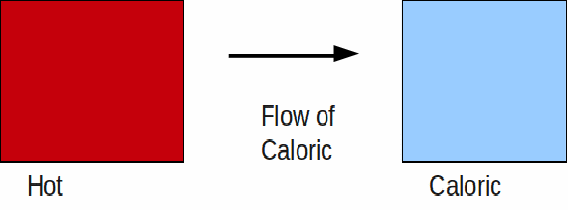When a cold and a hot body is brought into contact, it may be self evident that hot body will cool down and the hot body will heat up. Many people will say that will flow from the hotter to the colder body, as if heat were a substance like water. Once it was thought in fact that heat was an invisible fluid called called caloric or phlogiston. Still today we use calorie as a unit of energy. The more caloric a body contained, the hotter it was. The picture we have of the nature of heat has changed, but the language of the outdated picture persists to confuse us.

In many situations the caloric idea of heat as a fluid suffices – the exchange of heat between bodies at different temperatures and the expanding of a gas as it is heated is explained by saying it absorbs caloric (though the gas should afterwards weigh mre, which it does not). Sometimes however, it fails. It does not explain how heat can be transferred by conduction through a solid body, or how heat is generated as a result of friction for example. If things are warmed up as a result of caloric, how does friction produce caloric? If caloric was a substance, how could it be produced as a result of materials being rubbed together? And since the mass of the things that are rubbed together does not decrease, how could this mysterious substance be produced and have no mass?
The caloric theory has been replaced by the view that the heat contained in a body is due to random motion of the molecules and atoms that make up the body.
